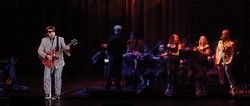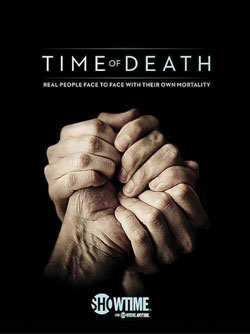Halloween is over, but there’s still something haunting me. We have lost incredible talents like singer/songwriters, actors, and musicians who we admire and would do anything to see them just one last time. But show business won’t let the dead die.
Last week, it was announced that actor James Dean, who died from drag racing at 24-years-old in 1955, will be making an appearance in a new film about the Vietnam War 64 years after his death. The announcement brought a lot of criticism from fans and even stars like Chris Evans, who tweeted, “‘I’m sure [Dean would] be thrilled. This is awful.”
Although this is not through the same hologram technology that’s being used to create concerts for Prince and other stars, it’s still bringing back a beloved celebrity to appear in front of audiences.
The director of this Vietnam War drama, Anton Ernst, denied the criticism and said that studios think it’s a great idea. The studio may think that if audiences still watch his films like Rebel with a Cause, they might come out for this one. Despite the backlash, the Dean film is slated for next year’s Veteran’s Day.
Assistant Professor of Digital Media Amanda Stojanov, M.F.A., made a point about the idea of this technology reeling in audiences with, “From a capitalist point of view the corporations selling tickets to this event clearly see a market opening there and a way to make a profit.”
Dean isn’t the only celebrity to be resurrected in Hollywood. In 2015’s Furious 7, Paul Walker made an electronic appearance after his sudden death in a car accident. However, in Walker’s case, fans were happy and emotional to see Walker one last time.
While Hollywood is getting a lot of buzz over bringing back the dead, the music industry seems to have a bigger shovel. In recent years, the music business has created hologram tours where deceased musicians travel the country to perform in front of a live band. Some of the artists who are given a new life include Prince, Tupac, Buddy Holly, Michael Jackson, Roy Orbison, and many more. These aren’t quiet basement concerts either; the holograms perform in front of large theaters or even award shows.
This process of digitizing a full concert or performance requiring a lot of money and years to complete. In fact, it cost about $400,000 to bring Tupac back to perform. Bringing back the dead is especially expensive if you think about how intricate Michael Jackson’s concerts were: full of dance and great music.
The programmers have to do months, maybe even years, of studying to make the concerts as perfect as they make them sound.
When this idea of Hologram concerts went viral, an MTV representative, James Montgomery made it clear to NPR, when this technology is cheaper to use, artists who have passed will sell out concerts especially if they do a residency in Las Vegas.
Considering many were upset of bringing back Dean, why do holograms sell out concerts? –
Professor of Psychology Jamie Uhler-Goodwin, Ph.D., stated, “Some musicians are so ubiquitous that they and the music they create come to define whole generations.” And those generations are paying to see their holograms play.
While fans may watch old videos of artists performing live, there’s nothing like the real thing. It’s one thing to see Elvis belt out a high note from ‘The Wonder of You’ on TV, but people want to hear the theater speakers shake and see the beads of sweat dripping from his forehead.
It also gives artists the opportunity to perform with muscians they didn’t have the chance to play with in the past.
In 2012, a holographic Tupac performed with Snoop Dogg and Dr. Dre at Coachella. While some may have found it strange to see a strikingly lifelike appearance of Tupac, it gave Snoop Dogg and Dr. Dre a once in a lifetime opportunity.
Beyond holograms, there are artists who record songs with the voice of artists who have passed. For example, in 2014, Barry Manilow came out with an album called My Dream Duets, where he sung with those who he didn’t have the chance to sing with. On the album, he sung songs with legends like Whitney Houston, Sammy Davis, Jr., and John Denver.
Although people are quick to criticize the resurrection of Dean, the hole of bringing back deceased celebrities is only getting deeper. Until audiences stop buying tickets to hologram shows, applaud CGI cameos, or listen to fantasy duet albums, the entertainment industry will keep digging that hole.
IMAGES TAKEN from Port Shopping Spree


